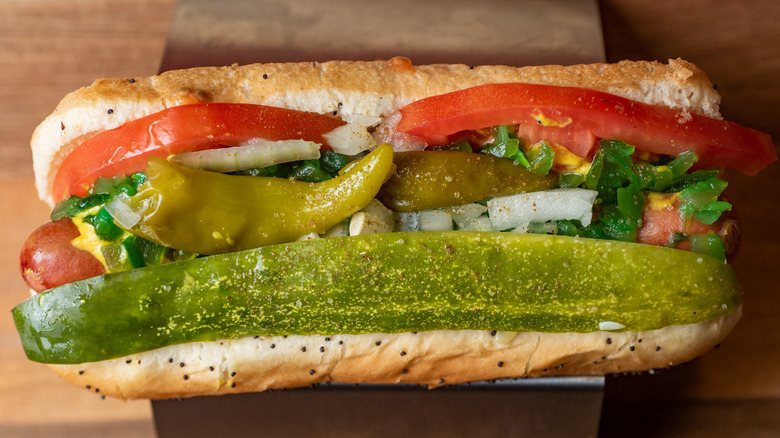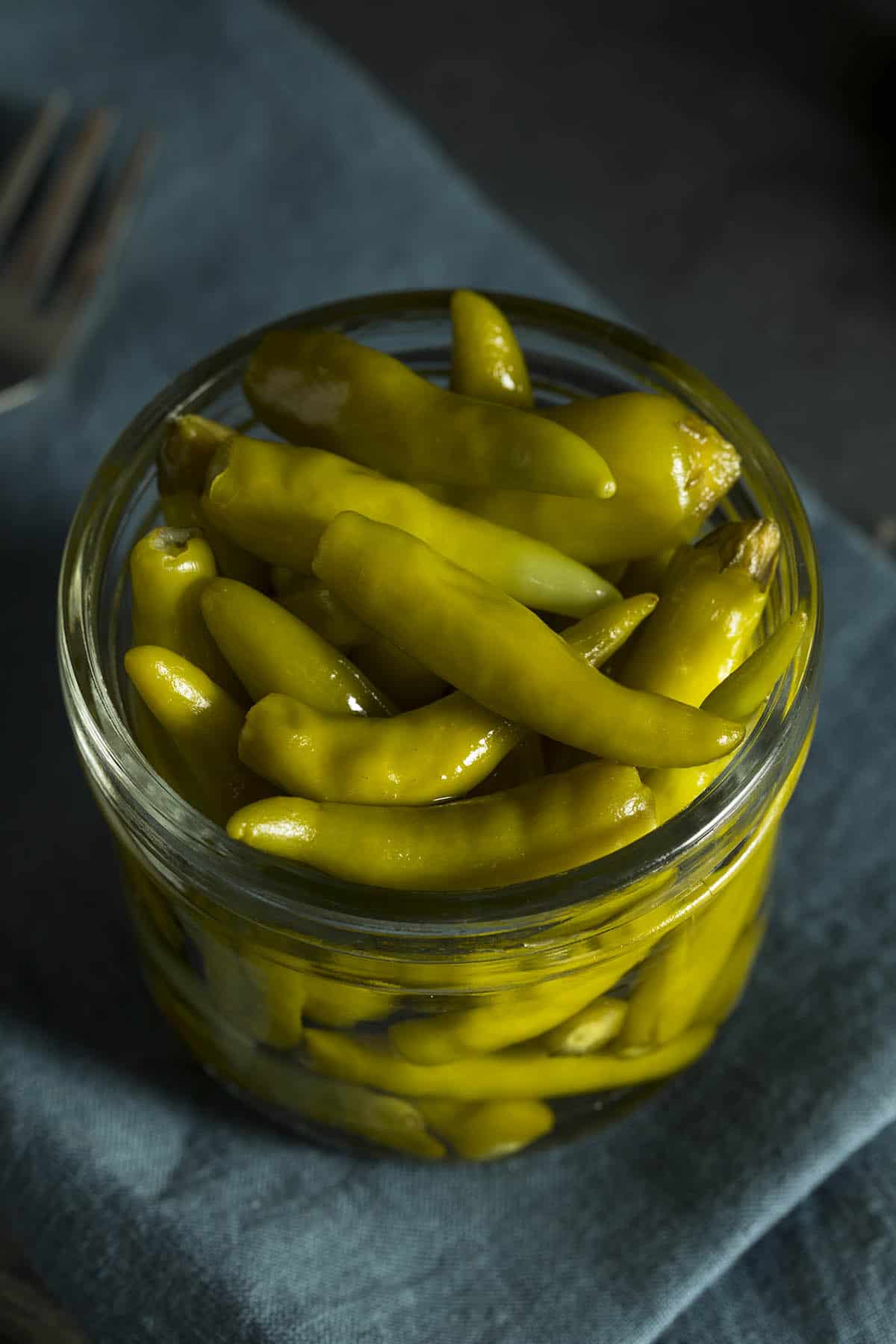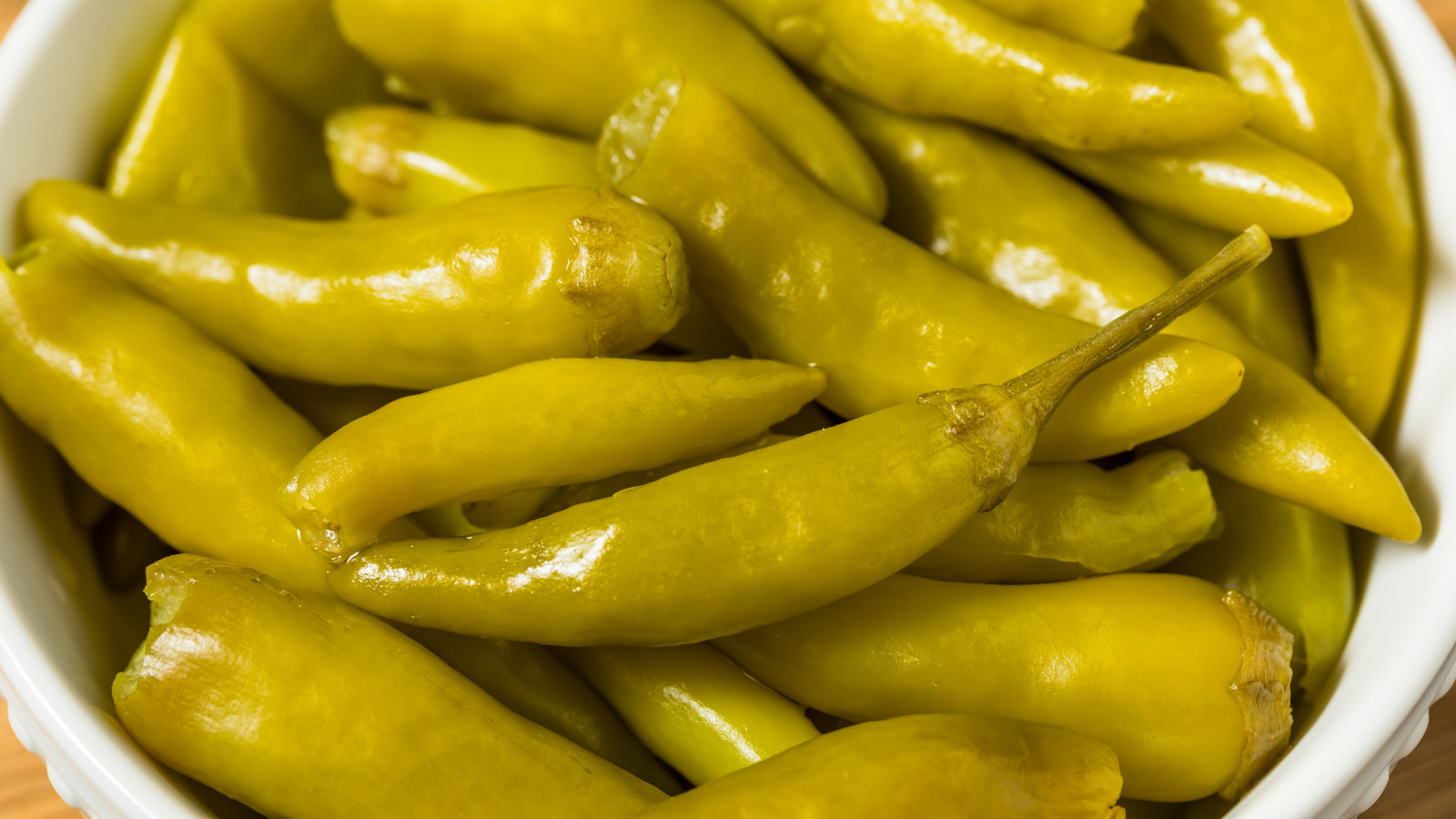Sports peppers are small but pack a punch. These spicy gems are popular in various dishes.
In this blog, we’ll dive into the world of sports peppers. You’ll learn about their origin, uses, and why they are a favorite in the culinary world. Sports peppers add a fiery kick to your meals. They are often used in Chicago-style hot dogs and Italian beef sandwiches.
Originating from the Capsicum annuum species, these peppers are pickled and preserved, enhancing their flavor. They are small, usually about 1 to 1. 5 inches long, but their heat level ranges from mild to hot. Understanding their role in cuisine can elevate your cooking skills and introduce you to new, exciting flavors. Ready to spice up your dishes? Let’s explore the world of sports peppers together!
Introduction To Sports Peppers
Sports peppers are a staple in many kitchens. These small, green peppers pack a punch of flavor. They are often used to add heat to dishes. But what exactly are sports peppers? Let’s dive into their history, origin, and popularity in cuisine.
History And Origin
Sports peppers originated in the Mediterranean region. They have been used for centuries in cooking. They spread to the Americas through trade. Eventually, sports peppers became popular in the United States. Today, they are a key ingredient in many American dishes.
Popularity In Cuisine
Sports peppers are most famous in Chicago-style hot dogs. They add a tangy, spicy kick to the dish. You can also find them in Italian beef sandwiches. Many people enjoy them pickled, adding to the flavor. Their versatility makes them a favorite in many recipes.

Credit: www.thetakeout.com
Characteristics Of Sports Peppers
Sports peppers bring a unique zest to many dishes. Their distinct characteristics make them a favorite in various cuisines. This section will explore the appearance and size, as well as the flavor profile of these peppers.
Appearance And Size
Sports peppers are small and slender. They typically measure 1 to 1.5 inches in length. Their vibrant green color turns red as they mature. The skin is smooth and shiny, adding a fresh look to any dish.
Flavor Profile
Sports peppers are known for their spicy kick. They pack a medium heat, providing a strong but not overwhelming spice. The taste is tangy with a hint of sweetness. This balance makes them perfect for enhancing flavors in many recipes.
Health Benefits
Sports peppers are small, but they pack a punch. These fiery little peppers are popular in many dishes for their spicy flavor. Beyond their taste, they offer several health benefits that might surprise you. Let’s explore the nutritional content and potential health advantages of sports peppers.
Nutritional Content
Sports peppers are low in calories. A single pepper has only a few calories. They are also rich in vitamins and minerals. These include Vitamin C, Vitamin A, and potassium. They also contain fiber, which aids digestion. Despite their size, they offer a good dose of nutrients.
Potential Health Advantages
Eating sports peppers may boost your immune system. Their high Vitamin C content helps fight infections. They also have antioxidants that protect your cells. These antioxidants reduce inflammation and may lower the risk of chronic diseases. The capsaicin in sports peppers may aid in pain relief. It can also boost your metabolism and help with weight management.
Capsaicin may also improve heart health. It helps reduce blood pressure and cholesterol levels. Additionally, the fiber in sports peppers promotes a healthy digestive system. It keeps you regular and can prevent constipation. Small but mighty, sports peppers offer more than just a spicy kick.
Culinary Uses
Sports peppers are small, hot peppers that pack a punch. Their versatility in the kitchen makes them a favorite among chefs and home cooks alike. Whether you are crafting a traditional dish or experimenting with a modern recipe, sports peppers add a zesty kick to your culinary creations.
Traditional Dishes
Sports peppers hold a special place in many classic recipes. In Chicago, they are an essential topping for the famous Chicago-style hot dog. These peppers give the hot dog its signature spicy crunch. You can also find them in Italian beef sandwiches, adding an extra layer of flavor.
Another popular use of sports peppers is in pickled dishes. Pickling sports peppers brings out their natural heat while adding a tangy twist. They are often served as a side dish or condiment, complementing meats and sandwiches perfectly.
Modern Recipes
In modern cuisine, sports peppers are used in a variety of creative ways. Chefs incorporate them into gourmet pizzas for an unexpected spicy element. They also appear in fusion dishes, blending traditional and contemporary flavors.
Home cooks love adding sports peppers to salads for a burst of heat. These peppers can also be chopped and mixed into salsas, giving a fresh, spicy kick. For a quick snack, try stuffing sports peppers with cheese or cream cheese for a delightful bite.
Here is a simple table to highlight some modern uses:
| Dish | Usage |
|---|---|
| Gourmet Pizza | Topping |
| Salad | Chopped |
| Salsa | Mixed In |
| Stuffed Peppers | Filled with Cheese |
Sports peppers are a versatile ingredient in both traditional and modern dishes. Their bold flavor and heat make them a beloved addition to any meal.
Growing Sports Peppers
Sports peppers add a spicy kick to many dishes. Growing them at home can be a fun and rewarding experience. This guide will help you understand the best conditions and challenges you may face.
Ideal Growing Conditions
To grow sports peppers successfully, you need to provide the right environment. Here are some key factors:
- Sunlight: Sports peppers need full sun. Aim for at least six hours of direct sunlight each day.
- Soil: They prefer well-drained, sandy soil. The soil pH should be between 6.0 and 6.8.
- Temperature: Ideal temperature ranges from 70 to 85 degrees Fahrenheit.
- Watering: Keep the soil consistently moist but not waterlogged. Overwatering can harm the plants.
Common Challenges
Growing sports peppers can come with some challenges. Here are a few common issues and how to handle them:
- Pests: Aphids and spider mites can be a problem. Use insecticidal soap or a strong water spray to control them.
- Diseases: Fungal diseases like powdery mildew can affect the plants. Ensure proper air circulation and avoid overhead watering.
- Temperature Fluctuations: Sudden drops in temperature can stress the plants. Use row covers to protect them from cold snaps.
By providing the right conditions and addressing challenges early, you can grow healthy and productive sports pepper plants.

Credit: www.chilipeppermadness.com
Preservation Methods
Preserving sports peppers is essential for enjoying their unique flavor year-round. The right preservation methods ensure they remain fresh and flavorful. Let’s dive into two popular preservation methods that you can try at home.
Pickling Techniques
Pickling sports peppers is a common preservation method. Start with fresh, firm peppers. Wash them thoroughly. Prepare a brine using vinegar, water, sugar, and salt. Add spices like garlic or dill for extra flavor. Boil the brine until the sugar and salt dissolve. Place the peppers in a jar, then pour the hot brine over them. Seal the jar tightly. Let the jar cool to room temperature. Store it in the refrigerator.
Storage Tips
Proper storage keeps pickled sports peppers fresh. Always use clean jars with tight lids. Store jars in a cool, dark place. A pantry or cellar works well. Once opened, keep the jar in the refrigerator. Always use a clean utensil to remove peppers. This prevents contamination. Check for signs of spoilage. Discard any jars with mold or off smells. Following these tips will help you enjoy your peppers for months.
Pairing Suggestions
Pairing suggestions for sports peppers can elevate your culinary experience. These small, tangy peppers pack a punch of flavor. They add a spicy kick to many dishes. Discovering the right pairings can enhance their taste. Below are some excellent suggestions.
Complementary Flavors
Sports peppers go well with hearty meats. Think sausages or grilled chicken. The spicy tang pairs perfectly with the savory flavors. They also complement rich cheeses. Try them with cheddar or blue cheese. The creaminess balances the heat. Another great match is pickles. The acidity of pickles and sports peppers create a zesty duo. Finally, don’t forget about garlic. The sharpness of garlic enhances the pepper’s heat.
Best Beverage Matches
Choosing the right drink can make a difference. Light beers work well. Their refreshing taste cools the heat. A pale ale or lager is ideal. You can also try a margarita. The lime and salt enhance the pepper’s flavor. Iced tea is another good choice. The sweetness balances the spiciness. For something different, consider a cold glass of milk. It soothes the palate and reduces the heat.
Buying Sports Peppers
Sports peppers are a popular ingredient for adding a spicy kick to dishes. These small, green peppers are commonly used on hot dogs, sandwiches, and in pickled form. When buying sports peppers, there are a few things to consider to ensure you get the best quality. Below, we will discuss where to purchase sports peppers and what to look for when buying them.
Where To Purchase
You can buy sports peppers from various sources. Here are some options to consider:
- Grocery Stores: Many supermarkets carry sports peppers in the pickled foods section.
- Online Retailers: Websites like Amazon and specialty food sites offer a wide selection.
- Farmers Markets: Fresh sports peppers might be available during the growing season.
- Specialty Shops: Stores that focus on gourmet or international foods often stock them.
What To Look For
When selecting sports peppers, keep these points in mind:
- Freshness: Fresh peppers should be firm and bright green.
- Packaging: Pickled sports peppers should be in sealed, undamaged jars.
- Brand Reputation: Choose brands known for quality and consistency.
- Expiration Date: Check for the longest shelf life to ensure freshness.
- Ingredients List: Look for simple, natural ingredients with no added preservatives.
By keeping these tips in mind, you can enjoy the best sports peppers in your meals.

Credit: www.thetakeout.com
Frequently Asked Questions
What Are Sports Peppers?
Sports peppers are small, green, pickled chili peppers. They are typically 1-1. 5 inches long.
How Spicy Are Sports Peppers?
Sports peppers are moderately spicy. They have a Scoville rating of 10,000-23,000.
Where Can I Buy Sports Peppers?
You can buy sports peppers at grocery stores. They are also available online.
How Do You Use Sports Peppers?
Sports peppers are often used as a condiment. They add spice to hot dogs and sandwiches.
Conclusion
Sports peppers add zest to many dishes. Their unique flavor enhances meals. Try them on hot dogs or in salads. Enjoy a spicy kick with every bite. Easy to find and use, they brighten your culinary creations. Experiment with sports peppers in your kitchen today.
Your taste buds will thank you!
